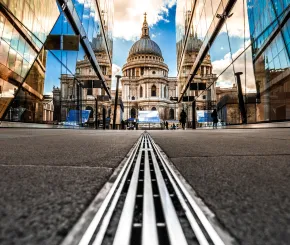A business created to make computer game graphics more beautiful stumbled into driving AI, one of the most important technologies of the 21st century. Rathbone Greenbank Global Sustainability Fund manager David Harrison explains what all the fuss is about.
Back to the cycle
The era of virtually zero percent interest rates is over. Rathbones head of multi-asset investments David Coombs believes that means a return to boom and bust, and he outlines which businesses are most at risk.

Since 2008 we haven’t really had an economic cycle. COVID-19 was a massive interruption to our lives and commerce, but it wasn’t at all like any past economic boom/bust cycle.
For the past 14 years the global economy has pottered on in a strangely muffled state. We still had news and events and scares and surprises, but throughout it all the economy seemed smoothed. Zero interest rate policy would do that for you. Money was cheap and it flowed to all sorts of places in the great scrounge for yield. It meant that virtually anyone could borrow some cash at a generous rate to paper over some shortfalls between income and expenses. There wasn’t much impetus for tough decisions about spending.
Those days are over, both for people and for businesses. After many years of being little more than a bogeyman, recession is now looming large over the world. Governments, companies and households will have some hard decisions to make. Businesses must make it very difficult for their customers to switch to a cheaper rival or dispense with their products all together. Otherwise they will be toast. We have been reviewing our investments using this litmus test: are they the best value option? And are they making solid profit margins that allow them the flexibility to reinvest in themselves and ride out difficult times?
Margin of safety
Now that interest rates are much higher than they’ve been in half a generation, I think it will intensify pressures on the indebted, the lesser-quality and the superfluous.
Over the past 10 years and more, companies have been able to borrow money extremely cheaply to finance new business projects. Because prevailing interest rates were virtually zero, the return required to break even on these investments was comically low. Using other people’s money to build up low-margin profits was a lucrative strategy! But I think companies that took this path are going to have a tough ride now that rates are higher. Many of them are likely to go to the wall, in my opinion, as the business model simply doesn’t work now that the cost of borrowing has shifted sharply higher. We haven’t seen a proper wave of company defaults since the Global Financial Crisis, so once again this would be a return to the typical boom/bust cycle.
We try to invest in companies that generate profits with a healthy buffer between their revenue and the expenses of running the business. This gives managers greater flexibility and more options for dealing with difficult periods and for coming up with new products and services to keep the enterprise fresh. They can pay their staff better, ensuring they have the best people. They can invest in better technology to improve efficiency. They can make strategic decisions without being unduly influenced by simply getting by day-to-day. Generally, they just aren’t suckered into scrimping on things that snowball into a dying business.
I want to invest in businesses that have less debt than their peers, because as borrowing costs rise interest payments will become a significant expense that eats into profits. And borrowing costs aren’t like other expenses – borrowing costs compound themselves, getting worse each year unless you divert yet more cash to paying off your debts. This leaves less money to reinvest in the business to stay ahead of competitors and increase sales. When rates are higher and inflation is falling, you want to be the lender, not the borrower.
Return of the bonds
To put it bluntly, for many years bonds were often return-free risks. Yields were so low that there was no return accruing to the holder, especially after accounting for inflation. There was precious little cash flowing back to bondholders in coupons and there was a lot of risk of capital loss if interest rates rose from record lows (which came to fruition), particularly for bonds that matured in five, 10, 20 years plus. This is no longer the case.
With interest rates marching higher all around the world, yields on bonds have obviously increased massively. We have since increased our holdings of government and high-quality corporate bonds, spread all over the developed world.
A year ago, the prevailing belief was that the global economy would disintegrate if American interest rates rose above 2% or so. The US benchmark rate is now almost 5% and, while economies are slowing, the world is far from economic Armageddon. However, some companies – and governments – will struggle in the years to come, so you must tread carefully.
Tune in to The Sharpe End — a multi-asset investing podcast from Rathbones. You can listen here or wherever you get your podcasts. New episodes monthly.





